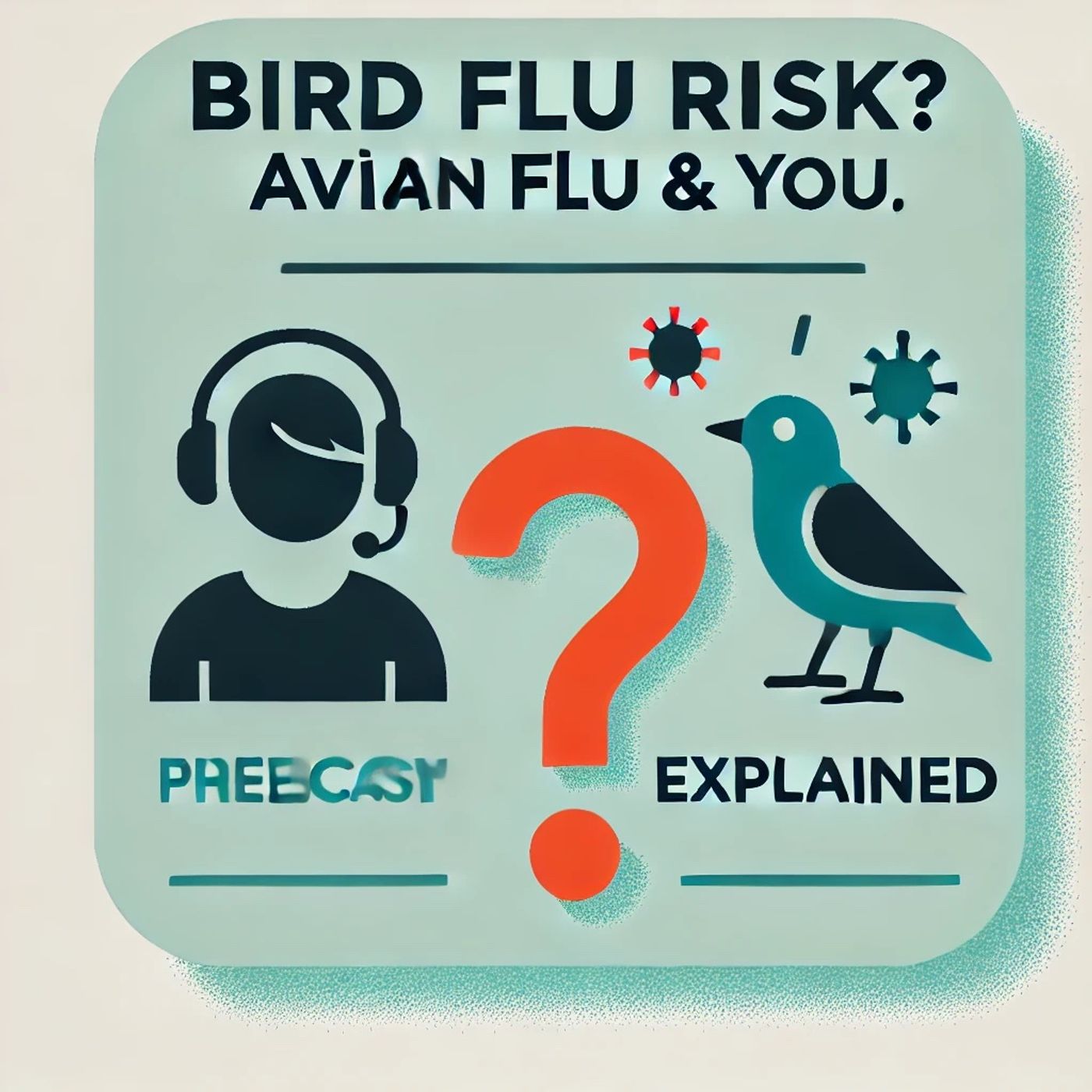Podcast Episode Details
Back to Podcast Episodes
Bird Flu Risk Explained: What You Need to Know About Avian Influenza Transmission and Personal Safety in 2024
Welcome to Bird Flu Risk? Avian Flu & You, Explained. I’m your host, and for the next three minutes, we’re breaking down bird flu risk in real terms, helping you understand where you stand and what you can do.
Let’s start with the basics: Right now, leading organizations including the World Health Organization and the CDC report that overall risk of bird flu for the general public remains low. Most human cases have been linked directly to specific animal exposures—not person-to-person spread—according to the CDC and the Food and Agriculture Organization.
But your individual risk can vary a lot, so let’s break it down.
First, occupation is key: If you’re a poultry farm worker, work in live bird markets, handle dairy cattle, process raw milk, or are involved in slaughterhouses or animal health roles, your exposure—and therefore your risk—is higher. This includes not just industrial farm settings but small backyard flocks, veterinarians, and people who work in wildlife rehab, zoos, or sanctuaries. Johns Hopkins University public health assessments confirm increased risks for these jobs, especially during outbreaks.
Next up is location. Living or spending time where infected birds, poultry, or recently affected livestock are present—for example, rural counties with cattle or poultry farms reporting outbreaks—raises your risk. If your area has seen several farm outbreaks in the past few months, extra vigilance is wise.
What about age or health? The CDC highlights that older adults are somewhat more likely to have serious illness if infected, while healthy children and adults generally have lower risk. People with weakened immune systems or chronic illnesses may also want to be more careful, as with any infectious disease.
Let’s personalize this with a “risk calculator” narrative. Imagine you’re a teacher in a suburban school, with no direct animal exposure: your risk remains extremely low. Now, if you run a backyard chicken coop in an affected state, your risk increases, but following good hygiene and avoiding contact with sick birds cuts down that risk a lot. For someone working in a poultry processing facility during an active outbreak, the risk is higher, so personal protective gear and workplace safety protocols are essential.
Here’s specific advice for high-risk individuals: always wear recommended protective equipment, wash hands thoroughly after animal contact, change clothes and footwear before leaving work, and avoid touching your face until you clean up. Promptly report any respiratory symptoms or conjunctivitis to your healthcare provider, especially if you’ve been exposed at work.
If you’re low risk—no regular animal contact, don’t live near outbreaks—there’s no cause for alarm. Transmission to the general population has been rare, and surveillance shows declining infection numbers this summer.
For decision-making, here’s a simple framework: If you work directly with birds or livestock, especially in outbreak zones, take full precautions and stay alert for symptoms. If you don’t, basic hygiene is enough. Stay updated; as public health authorities note, risks could change if the situation evolves.
In summary, be vigilant if you work with animals, but most people have little to worry about right now. Stay informed, follow commonsense habits, and remember—context matters!
Thanks for tuning in to Bird Flu Risk? Avian Flu & You, Explained. Join us next week for more, and check out Quiet Please Dot A I for more podcasts like this. This has been a Quiet Please production. Stay healthy and see you next time!
For more http://www.quietplease.ai
Get the best deals https://amzn.to/3ODvOta
Published on 1 week, 3 days ago